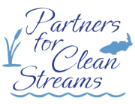 Microplastics are plastics that are less than 5 mm in size. The full extent of their effects on the environment has yet to be studied. However, research has shown that microplastics can cause physical harm to wildlife when ingested. Microplastics can absorb other chemicals such as trace metals, polycyclic aromatic hydrocarbons, pesticides, and some pathogens. Initial research has also suggested that plastic additives can contribute to disruption in the endocrine system and possibly cancer. Currently, there are five types categorized by the USGS: fibers, foam, fragments, beads/pellets, and film. After a study of microplastics in the Great Lakes Region published in 2016 from USGS, they found that foam microplastics were the least present microplastic found in the Maumee and Portage Rivers.
Microplastics are plastics that are less than 5 mm in size. The full extent of their effects on the environment has yet to be studied. However, research has shown that microplastics can cause physical harm to wildlife when ingested. Microplastics can absorb other chemicals such as trace metals, polycyclic aromatic hydrocarbons, pesticides, and some pathogens. Initial research has also suggested that plastic additives can contribute to disruption in the endocrine system and possibly cancer. Currently, there are five types categorized by the USGS: fibers, foam, fragments, beads/pellets, and film. After a study of microplastics in the Great Lakes Region published in 2016 from USGS, they found that foam microplastics were the least present microplastic found in the Maumee and Portage Rivers.
Beads and pellets find their way to waterways by shipping containers spilling plastic bead or pellets on their way to be melted down into plastic materials, like our water bottles or plastic bags. Though, it might not be a big problem to us locally, every day substitutes to reduce plastic usage can help waterways around the world. Trying these simple swaps can help reduce the demand for plastics:
- Use a reusable straw when you go out to eat.
- Bring re-usable bags to the grocery store.
- Buy items in bulk and limit the amount of single-use items you purchase.
- Use refillable water bottles and coffee cups.
- Bring your own cutlery to work for lunch.
- Use glass containers for storing leftovers.
- Choose glass over plastic bottled beverages.
- Invest in a compost bin to eliminate the amount of plastic trash bags needed.
